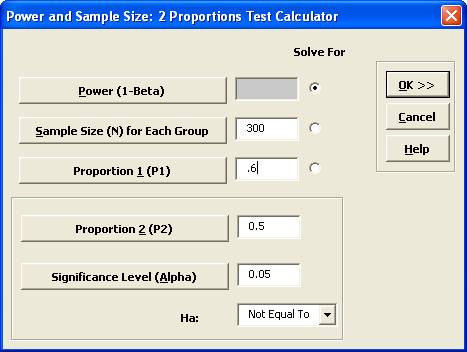We can get anything we want on the internet to make our lives easier. And maths is something which we always to make simple. So that is when the proportion calculator comes in. As we can understand by the name, a proportion calculator is an online tool that we can use to solve proportion problems in no time. Moreover, we can also find missing values in a proportion with the help of a proportion calculator.
Proportion Calculator Online: General Instructions
As using a proportion calculator might be difficult sometimes, there are some instructions that we need to follow while using a proportion calculator.
Each table has two boxes. The box on top is the numerator and the box on the bottom is the denominator. After we should enter a ratio with values in either table. Then we should enter only one value in the other table, either on the bottom or at the top. depending on the problem.
What is the use of a proportion calculator?
The use of a proportion calculator is pretty simple. It helps to calculate an unknown variable (x or y), it converts the given proportion into an equation. To use a proportion calculator we should just put the values in the box. We mainly use ‘=’ and ‘::’ to denote a proportion.
How does a proportion calculator work?
Now we will understand how a proportion calculator works. Before understanding how a proportion calculator works we need to understand that when we calculate an unknown variable ourselves we do it by using the cross multiplication method. We use ratio and proportion when we need to compare the quantities.
Suppose we have a proportion like [a:b::c:x]. However, we can express the proportion in two more ways. We can represent it as [a:b=c:x] or as [a/b=c/x]. Now as we can see that the ratios a:b and c:x are equivalent to each other. Here c is the third proportional and x is the fourth proportional to a and b. Now as we don’t know the value of the 4th one which is denoted by x, we will find it using the proportion calculator.
To illustrate this we will follow the steps below:
- We need to enter the numerator of the first fraction in the first box on the left side.
- After that we need to enter the denominator of the first fraction in the second input box on the left side.
- Thereafter we need to enter the numerator of the second fraction in the first input box on the right side.
- Finally we need to enter the denominator of the second fraction in the second input box on the right side.
So out of these four values, one needs to be the variable. So we should enter x in the fourth input box as the fourth value here is missing. Here, the calculator automatically calculates the value of any missing number mainly using the cross multiplication method.
Analysis of cross multiplication method
For somebody who does not know the cross multiplication method, it is the method when we multiply the numerator of the first fraction with the denominator of the second fraction and the denominator of the first fraction along with the numerator of the second fraction. For example, we will take the previous fractions only which are like a/b=c/x. Now if we cross multiply we will get (a)*(x)=(b)*(c).
Proportion Calculator: Ratio
Another part of the proportion calculator that we are going to discuss is the ratio calculator. The proportion calculator and Ratio calculator are more or less the same.
The ratio calculator mainly focuses on three types:
- Firstly, to solve ratios for a missing value while comparing ratio and proportion.
- Secondly, to simplify ratios or to an equivalent ratio when a of the ratio is blank.
- Finally, to compare ratios and evaluate whether they are true or false and also to answer whether ratios or proportions are equivalent.
Simplication of Ratios
We also need to know that a ratio calculator is also an online tool that accepts decimals, e notations, and, integers. One of the major advantages of a ratio calculator is that it can simplify ratios. We need to fill up all the gaps in the ratio calculator and it will simplify the ratios as much as possible.
Conversion of Ratio to Fraction
The parts of the ratio state the proportion of the parts in relation to each other. So the sum of these parts makes the proportion as a whole. For example, the ratio of 5:4 is actually ‘ 5 to 4’. This actually means that in the whole of 9, there is a part which is of 4 and another of 5.
To convert a ratio to a fraction;
- Firstly, we need to add the ratio terms and get a whole sum. Then we will use it as a denominator. So, it will be 5 : 4, then 5 + 4 = 9.
- Secondly, covert the ratio into fractions. Therefore each ratio part will become a numerator in a fraction. 5:4, 5/9 and 4/9
- Finally, we will get two new whole ratios one is 5:9 and another is going to be 4:9.

Proportion Calculator: Statistics
Another variation of the proportion calculator is a statistics calculator. A statistics calculator is a calculator which calculates such as standard deviation, sample standard deviation, geometric mean, and mean population. It also calculates basic statistics of summary for a population data set or sample such as maximum, minimum, sum, range, count, mode, median, mean, and variance.
Secondly, we need to keep a few things in mind while using a statistics calculator. First is that we need to enter data by separating them with spaces or maybe commas. After that, we can also copy data from text documents or spread sheets.
Statistics Calculator: Calculations
Now we jump into the part where we will understand how to find out various values in the statistics calculator.
Finding Maximum
To find the maximum we need to take a data set from lowest to the highest value,
y1 ≤ y2 ≤ y3 ≤…≤ yn , so the maximum is the largest value in the dataset, yn .
So, the formula for maximum is:
Max = yn = max (yi)in = 1
Finding Minimum
To find the minimum we need to take a data set from the lowest to the highest value, y1 ≤ y2 ≤ y3 ≤…≤ yn , so the minimum is the smallest value in the data set, y1.
So, the formula for minimum is:
Min=y1= min (yi)in = 1
Finding Sum
To find the sum we need to know that the sum is the total data values added together. y1 +y2 + y3 +…+ yn .
Examples of sums in the Proportion Calculator
Now as we learned something about the proportion calculator and also its types, so let us look at some of the examples that we can solve in the proportion calculator.
- Find the value of y in proportion 8 : y=16: 64, and verify it using the proportion calculator.
Solution – The given proportion is 8 : y= 16 : 64.
8/y = 16/64
y= (16*64)/8
y = 128
- Find the value of x in proportion 11 : x = 33 : 121, and verify it using the proportion calculator.
Solution – The given proportion is 11 : x = 33 : 121.
11/x = 33/121
x = (33*121)/11
x = 363
- Find the value of x in proportion z : 4= 8 : 16
Solution – The given proportion is z : 4 = 8 : 16
z/4 = 8/16
z = (8*4)/16
z = 2
- Find the value of a in the proportion a : 12 = 48 : 144
Solution – The given proportion is a : 12 = 48 : 144
a/12 = 48/144
a = (48*12)/144
a = 4

Proportion Calculator: Decimals
So, now let’s look at another variation of the proportion calculator which is the decimal calculator. A decimal calculator is a calculator which we can use to add, subtract, multiply, and divide decimals. We can also find out the logarithm of decimals, square root of decimals, and decimal exponents.
Now we will know how to find out some of the things in a decimal calculator:
Multiplying
Multiplying in a decimal calculator is pretty easy. Here we don’t need to maintain the same number of digits after decimal in both the numbers we can just simply multiply. But we need to know in both the numbers in total before how many digits the decimal is there. Then just put it in the product. For example, (9.87) * (5.6) = 55.272
Subtraction
On the other hand, while subtracting we always need to make sure that the same number of digits are there after the decimal in both the numbers. If they are not similar then we need to make them similar after adding zeroes after them. For example,
98.456 – 89.600
So we will make it similar by adding zeroes after them,
98.456 – 89.600 = 8.856
Addition
As we did it in subtraction we also need to do the same thing in addition. For example,
65.4589 + 35.04
So as they are not similar we will make them similar by adding zeroes after them,
65.4589 + 35.0400 = 100.4989
Dividing
Here also we need to make sure that there is the same number of digits after the decimal in both the numbers. But, to do that we need to do something different. Instead of adding zeroes, we need to multiply them by 10, or 100, or 1000….. (depending on the number of digits that are there after the decimal point). Read Also:Integration By Parts Calculator Free, Online, Step by Step
For example 1.25/0.25. Here, in the denominator, we will multiply 100 as two digits are there after the decimal in the numerator. And in the numerator, we will also multiply 100 as in the denominator two digits are there after the decimal in the denominator.
Proportion Calculator: Z Score
Another variation of the proportion calculator is the Z score calculator. So, let’s find out about the z score. Z score is also termed as a standard score. It has no dimensions. Its uses are:
- to indicate the number of standard deviations by the mean value can be measured.
- indicate signed number
- to indicate the fractional number
Z – table
A z – table can also be termed a unit normal table or a standard normal table. It is a table that consists standardize values to determine whether the given statistics are above, below, or between the standard distribution.
Proportion Calculator: Confidence Interval
A confidence interval is a concept that is statistical and is used for estimation purposes. A confidence interval has the property which we are confident about that the corresponding population parameter should be contained by it.
Few things to keep in mind:
There are a few things that we should keep in mind while using the confidence interval. It is very important to check the assumptions required to build the confidence interval for the population proportion. In this case, we need the normality assumption, it is there so we can involve a binomial variable. If we want to use the calculator we need to summarize the total number of favorable cases.
Proportion Calculator with Mean and Standard Deviation

Here, we will learn how to find out the mean and standard deviation using the statistics calculator.
How to calculate the Mean?
The mean is the sum of all the values in the data divided by the size of the data. The other name for the mean is average. The only difference between a population mean and a sample mean is the symbol used to express the mean.
How to calculate Standard Deviation
Standard Deviation is the process of distributing data about the mean. So, the formula for standard deviation is the square root of the sum of squared differences from the mean divided by the size of the data.
Proportion Calculator FAQs
What Ratio and Proportion Calculator?
To calculate Ratio and Proportion of any two quantities, the ratio formula is x : y => x/y. On the other hand the proportion formula is x : y :: z : a => xz = ya
What 3 proportion calculator?
The third proportion is the second term of the mean terms. For example, if we have x : y = z : a, then the term ‘z’ is the third proportion to ‘x’ and ‘y’.
What is a direct proportion calculator?
To calculate a direct proportion we need to keep a thing in mind. The equation of direct proportionality is a = kb, where a and b are given quantities and k is any constant value.




